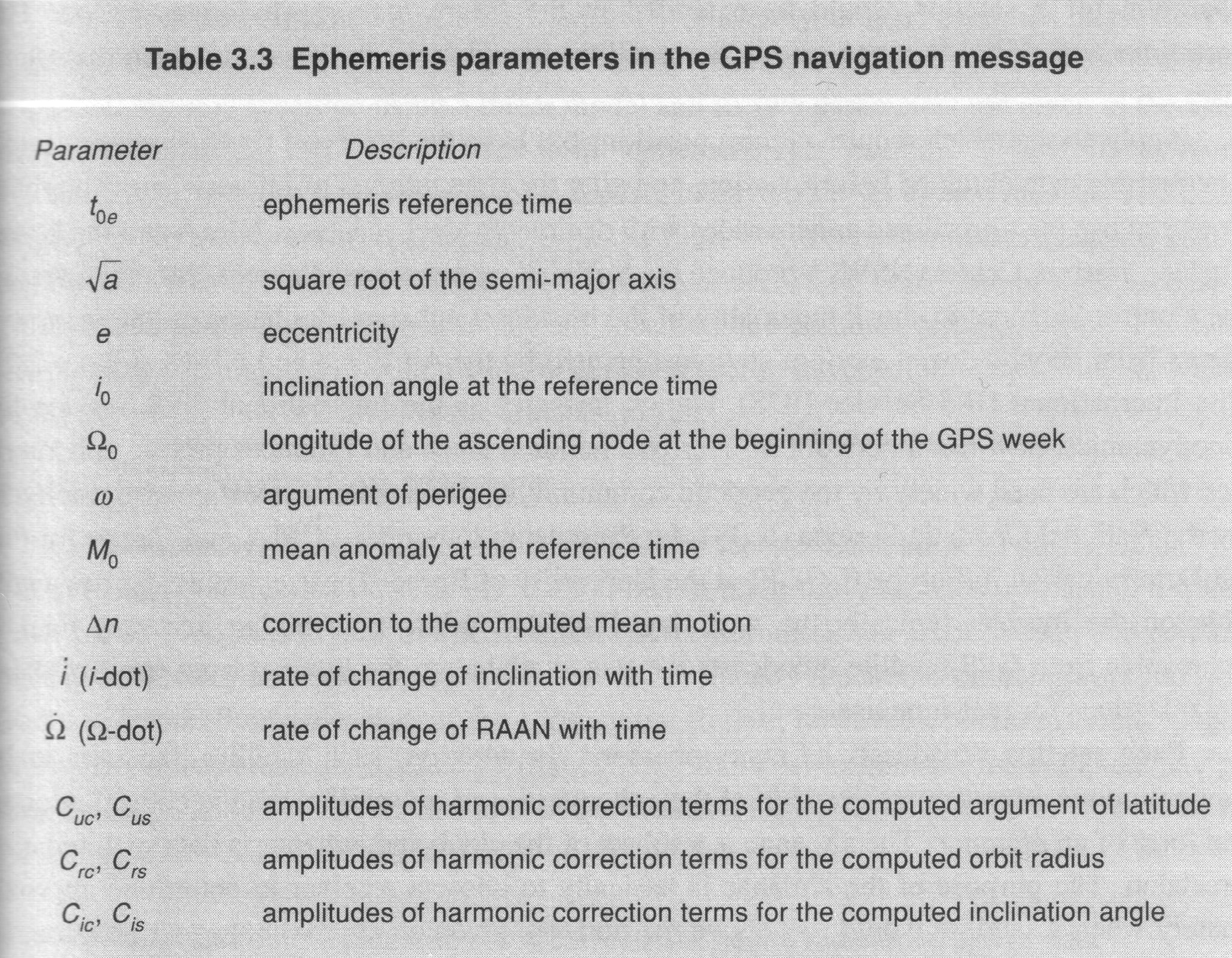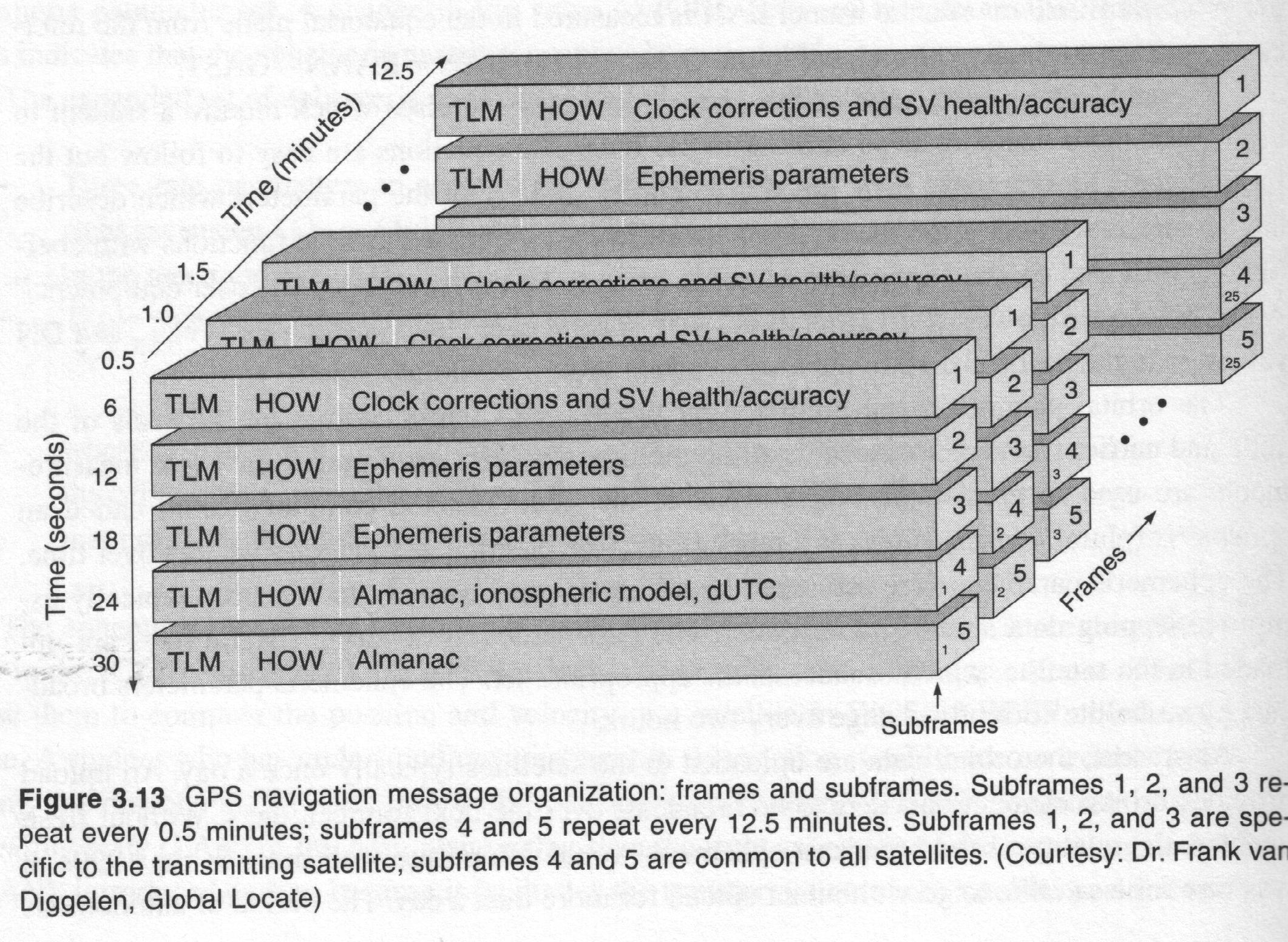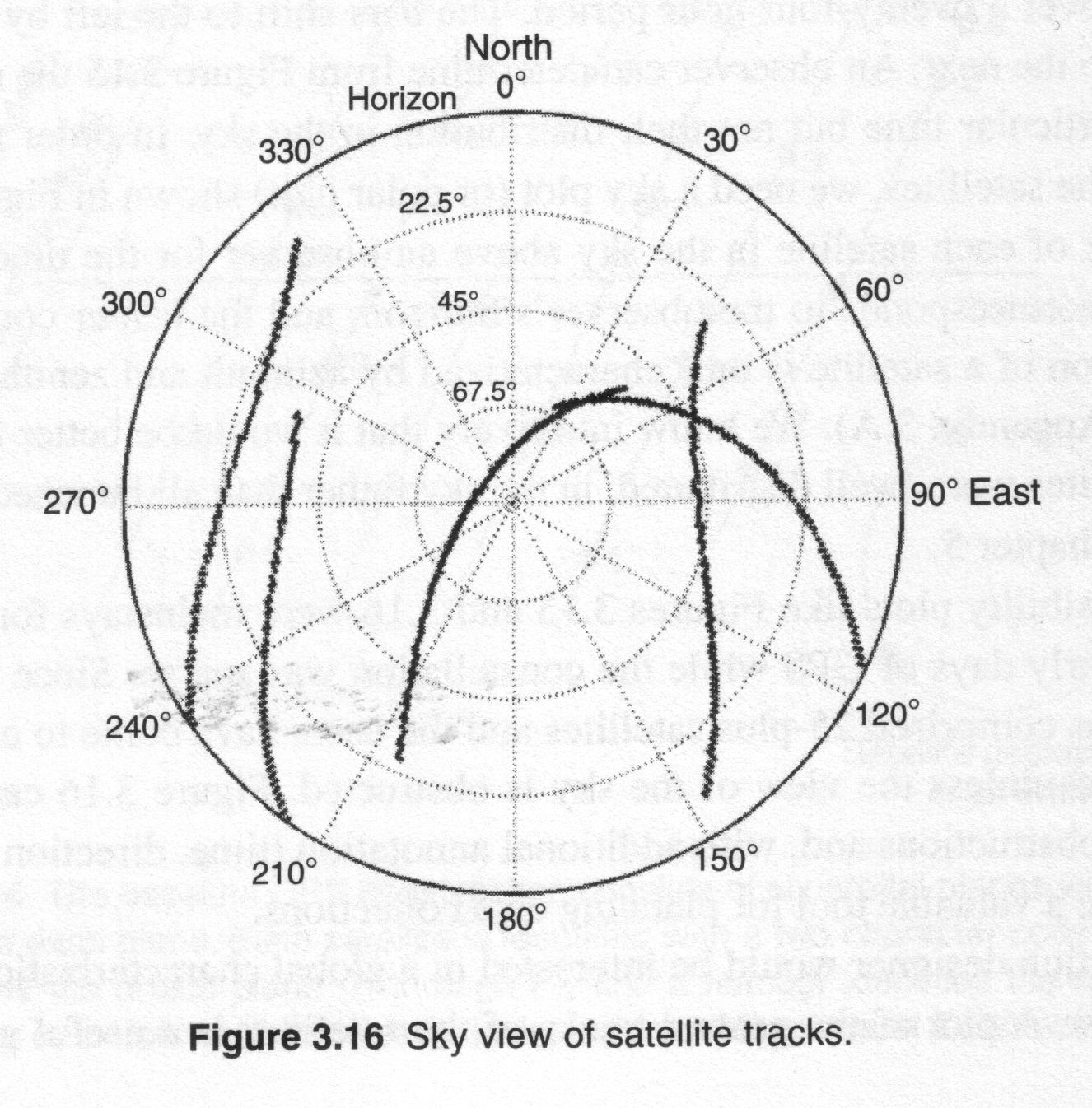In the two body problem (or Keplerian motion) we got the basic equation:
![]()
which integration formally gives the equation
![]()
But the assumed ideal conditions to get the satellite motion in the
two body problem is only a first approximation. In general we have to
take into account an additional acceleration ![]() produced from
the resulting perturbing forces:
produced from
the resulting perturbing forces:
![]()

The effect of the perturbations on the orbit can be computed numerically, directly on the satellite coordinates or we can assume that the effect is that now the orbital elements are time dependent: analytical integration, named variation of constants.
In this last approach (which is taken in the navigation message to transmit the perturbation corrections to the orbit with the osculating elements):
![]()
|
Perturbation |
Acceleration | Effect on the orbit | |
|
|
m/s
|
3-hours orbit | 3-days orbit |
|
Central force |
0.56 | |
|
| (for comparison) | |
|
|
| |
|||
| |
|
2 km | 14 km |
| Further harmonics | |
50-80 m | 100-1500 m |
| Solar & Lunar grav. | |
5-150 m | 1000-3000 m |
| |
|||
| Body tides | |
- | 0.5-1.0 m |
| Ocean tides | |
- | 0.0-2.0 m |
| Solar rad. press. | |
5-10 m | 100-800 m |
| Albedo | |
- | 1.0-1.5 m |
|
|
Effects of perturbations on GPS satellites after 4 hours:
|
Element |
|
Higher order | Sun | Solar Radiation |
| |
||||
| |
geopotential | Moon | pressure | |
|
a |
2600 m | 20 m | 220 m | 5 m |
| e | 1600 m | 5 m | 140 m | 5 m |
| i | 800 m | 5 m | 80 m | 2 m |
| |
4800 m | 3 m | 80 m | 5 m |
| |
1200 m | 4 m | 500 m | 10 m |
| |

Such parameters are provided in the GPS navigation message, which are
described in the GPS Inter Control Document (ICD).

Typically there is an upload per satellite once per day, containing
ephemerides predicted for 14 days, but they degrade if they are not
updated (new satellites incorporate cross-links measurements making
feasible extending the quality of the autonomous orbits.
NIMA and International GPS Service (IGS) networks compute
postprocessed orbits at decimeter-level of accuracy. IGS computes as
well ultra-rapid (accurate predicted) orbits with typical errors of few
decimeters.
In particular each satellite broadcast its own ephemeris, and a
coarse set (almanac) for the overall set of satellites for rapid
acquisition purposes, which are updated each several days. The
7-parameter set broadcasted (the 6 keplerian elements plus the line of
nodes right ascension drift) provides a typical error of 1-2 km, enough
for constellation visibility computation purposes.
